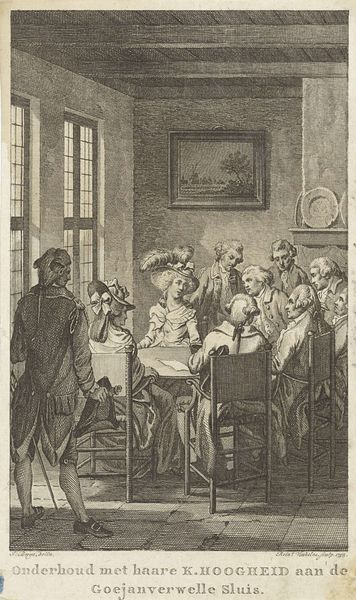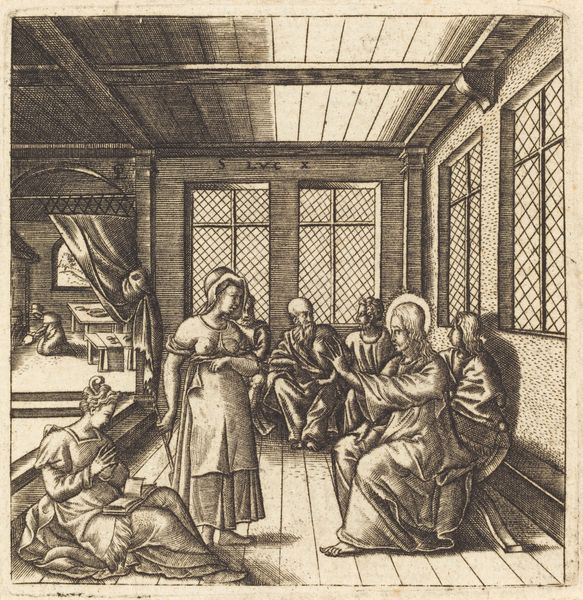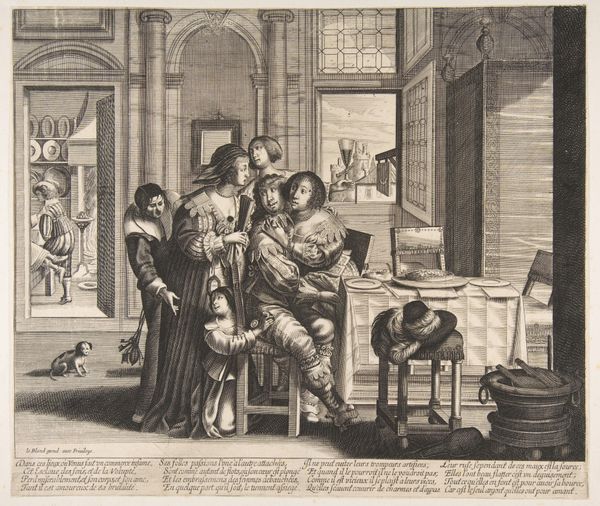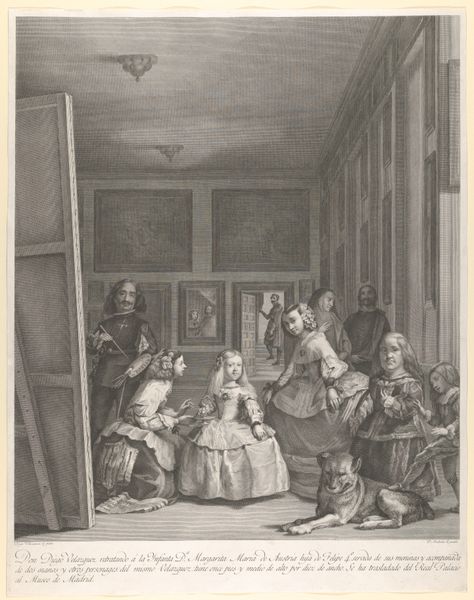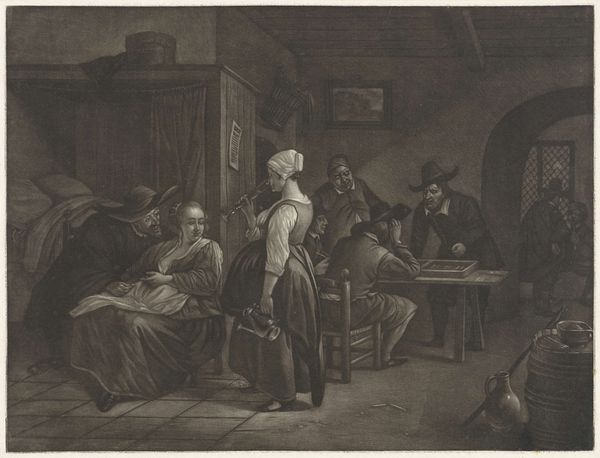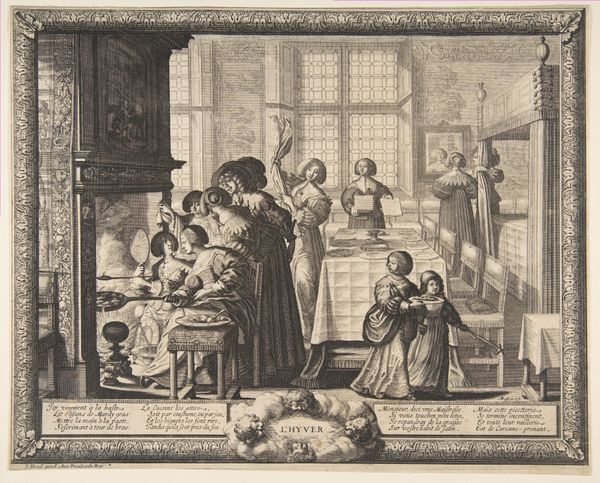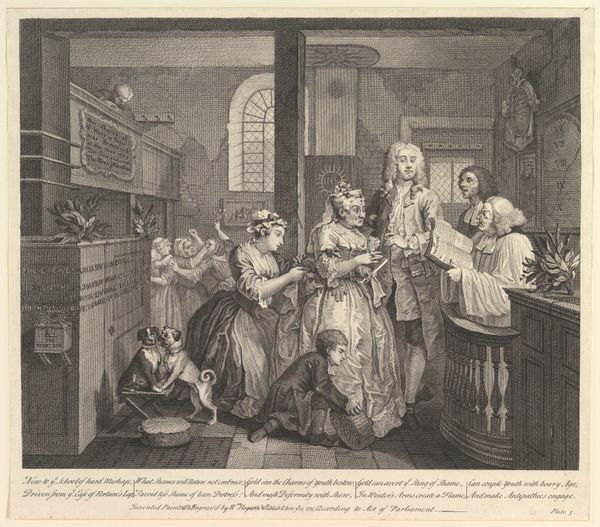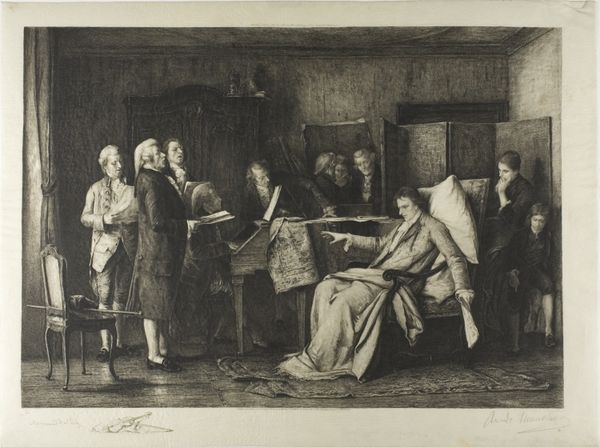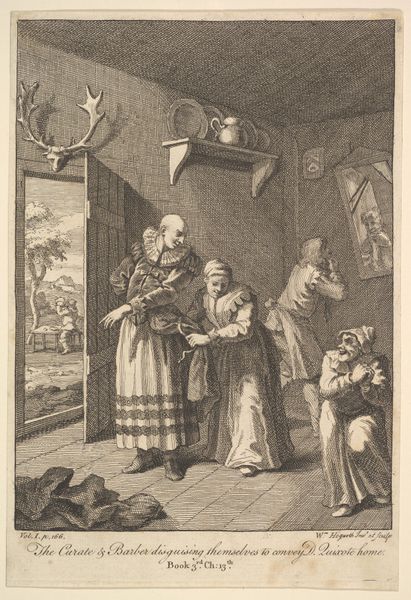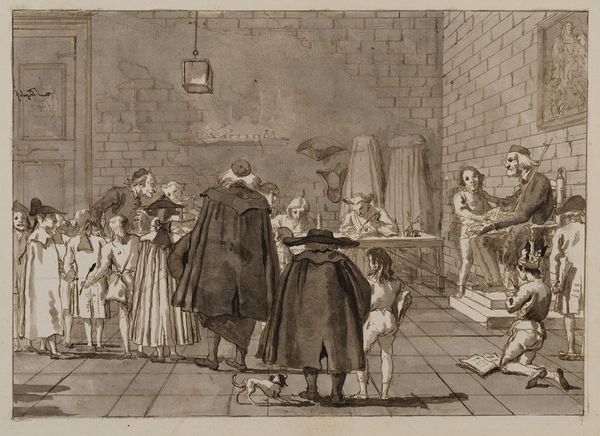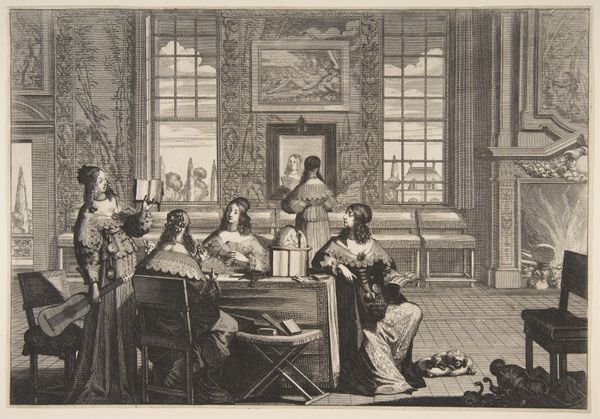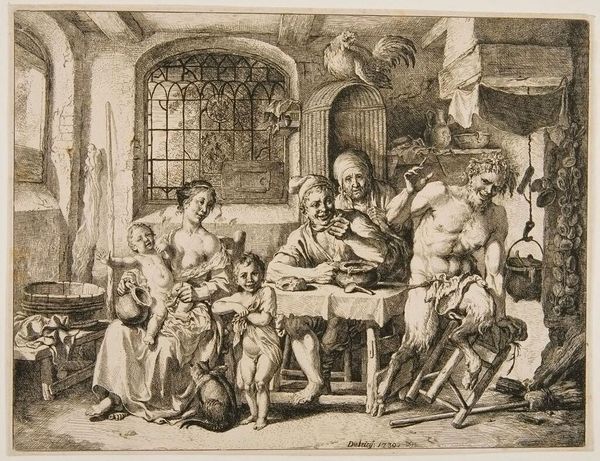
painting, oil-paint
#
portrait
#
dutch-golden-age
#
painting
#
oil-paint
#
figuration
#
cityscape
#
genre-painting
#
realism
Dimensions: 60 x 69 cm
Copyright: Public domain
Curator: Pieter de Hooch, a master of Dutch Golden Age painting, created this interior scene titled "Woman drinking with soldiers" in 1658. It currently resides at the Louvre. What strikes you about it? Editor: The first thing that hits me is the light. It feels utterly grounded in the materiality of the scene. See how it glances off the wooden floor, the pewter jug, and that thick wool skirt? You can almost feel the weight of the textiles and the cool smoothness of the glass. Curator: The quotidian details, elevated. De Hooch was remarkable for investing these ordinary scenes with profound symbolic meaning. Consider the open doorway behind, framing a seemingly endless series of rooms. A liminal space, it signifies choices, perhaps the shifting moral compass during this time. Editor: And what of the process of producing these images, right? The painting isn't huge. De Hooch was so intentional about the composition and staging of subjects with such close and intimate proximities and angles, rendering this type of labor-intensive precision quite unique and powerful. Curator: Absolutely, labor and craftsmanship intertwine beautifully here. Beyond the meticulous technique, let's examine the role of the figures and the emotional weight that’s being conferred upon them, particularly for this painting. The woman drinking is she empowered or is she entrapped? The faces offer ambiguity but what is clear is her prominent, bright-red dress contrasted with the drab outfits of her drinking companions, perhaps ascribing a symbol for passion or caution. Editor: Yes, but the paint itself plays a trick on our perception. That vibrant red isn't merely "red"; it’s layers of translucent glazes built up over time through skill and toil. These choices aren't about instant effect; they come out of a dedicated and sustained focus on production. Curator: Good point, but isn't color a coded message that carries through cultural memory? What is visible and apparent to you is still enmeshed and laden with signs of emotional power. We shouldn't discard symbolic interpretation in favor of just what pigments they used! Editor: I don’t discard the symbols; I suggest they aren't divorced from the practical decisions made in the studio or dictated by commerce. Curator: Fair enough, our interpretations reveal much about our current cultural landscapes too, perhaps. It's a work that continues to reveal secrets, centuries after its creation. Editor: Exactly. From its careful staging to its material realization, “Woman drinking with soldiers” invites endless exploration and questioning, a true testament to de Hooch’s enduring genius.
Comments
No comments
Be the first to comment and join the conversation on the ultimate creative platform.


